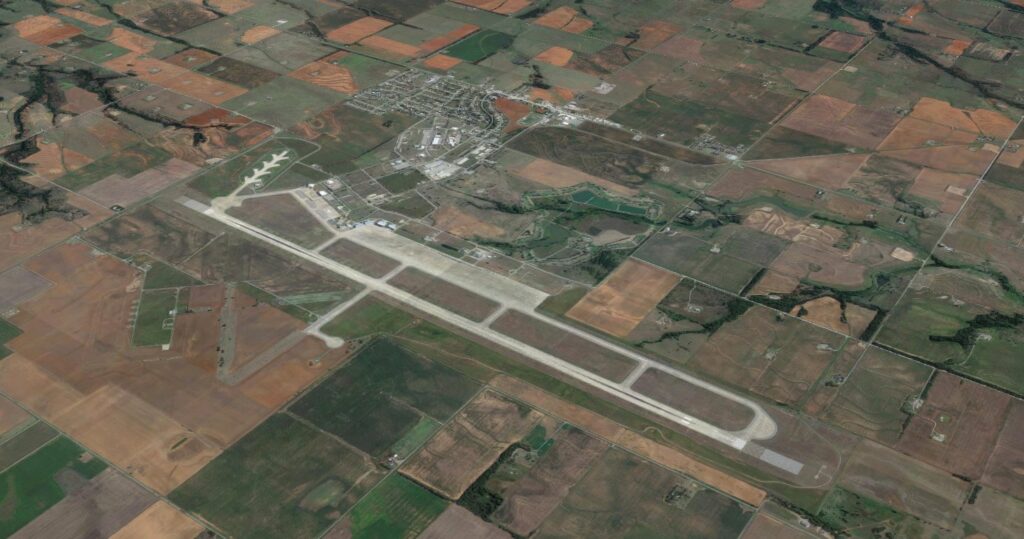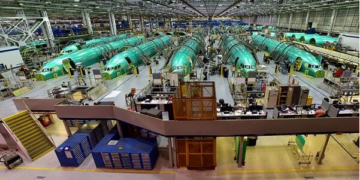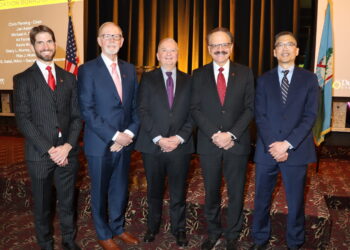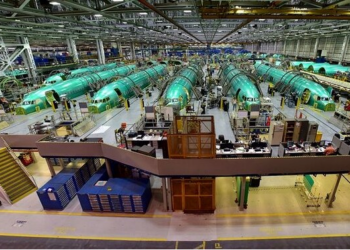OKLAHOMA CITY (OBV) – Oklahoma is making a move to become a space industry leader by merging the Oklahoma Space Industry Development Authority (OSIDA) into the Oklahoma Department of Aerospace and Aeronautics (ODAA).
OSIDA became part of ODAA on July 1.
The Aerospace and Aeronautics Department will uplift OSIDA’s mission, according to Grayson Ardies, Executive Director of ODAA and CEO of OSIDA.
“The team at ODAA is well-positioned to help take OSIDA and its responsibilities to the stratosphere and beyond by establishing long-lasting strategic partnerships, welcoming new aviation and aerospace tenants, and increasing awareness of what this industry can achieve,” Ardies said. “We are grateful for the Legislature entrusting our organization to help grow the impact of the space industry within Oklahoma and expect renewed excitement surrounding both the Space Port and the space industry as a whole. With this new energy, we are eager to enhance the statewide space mission, accelerate critical public investments, and ensure that the space industry can thrive in all areas of the state.”
The merger is a result of Senate Bill 912, written by Sen. Paul Rosino, R-Oklahoma City, and Rep. Nick Archer, R-Elk City. SB 912 automatically became law when it went to the Oklahoma Secretary of State after spending five days unsigned on Gov. Kevin Stitt’s desk.
Under the law, the Aerospace Department will serve as OSIDA’s board of directors. Also, Aerospace Department’s director will serve as OSIDA’s CEO.
Although, OSIDA is now part of the Aerospace Department, funding for the two entities will remain separate, according to the bill.
Aerospace and defense is Oklahoma’s second largest and fastest growing industry. State leaders are confident that ODAA’s success growing the state’s aerospace industry will translate to growing the state’s space industry.
“Oklahoma is charting a bold new course to elevate our role in the growing space economy. While our state has long supported traditional NASA missions and aerospace programs, the vast potential of the modern commercial space industry remains largely untapped,” said Lt. Gov. Matt Pinnell. “With this legislation, we’re making it clear: Oklahoma doesn’t just plan to compete—we plan to lead. By harnessing our robust infrastructure, skilled workforce, and rising prominence in aerospace innovation, we’re opening the door to new investment, high-quality jobs, and long-term technological leadership.”
The merger signals Oklahoma’s intention to blast off into a new frontier of space industry growth at the Oklahoma Air and Space Port in Burns Flat, which is operated by OSIDA, as well as across the state, according to state officials.

The Air and Space Port is the nation’s first inland, landlocked space port licensed by the Federal Aviation Administration (FAA), as well as one of the nation’s only 14 FAA-licensed space ports. Only 10 states have a space port, according to Oklahoma Aerospace officials.
“The Air and Space Port at Burns Flat has received significant investment from the state over the past three years and is well-positioned to provide a solid foundation for launching Oklahoma into the future. Our state’s second-largest and fastest-growing industry, aerospace and defense, is ready to adopt this emerging field of space commerce and transform the industry’s landscape to make aerospace and defense our largest economic sector,” Rosino said. “By building on our strengths in aerospace and defense, capitalizing on our strategic geographic location, and attracting targeted investments in cutting-edge space technologies, we are positioning ourselves as a national leader in space innovation. I look forward to seeing this legislation take effect and drive tangible results for Oklahoma’s economy and workforce, while also affirming our state’s role in advancing our nation’s space capabilities.”
The Space Port has a 2,700-acre aerospace industrial complex occupied that includes the following:
- Clinton-Sherman Airport
- Oklahoma Air and Space Port headquarters and offices
- 1,100-acre industrial park
The industrial park has available sites that can be leased for aeronautical and non-aeronautical manufacturing activities, maintenance, repair and overhaul (MRO), testing, training, and many other operations, according to Oklahoma Aerospace officials.
The complex is also a test and training site for the U.S. Air Force and aerospace companies, including Boeing, Cessna, Kratos, and Honda. It has tenants, such as Premium Aerospace Center, an FAA Part 145 MRO operation.
“Recognizing the importance of Oklahoma’s space sector, along with statewide policies and economic support, we will propel the new space frontier into a generation of organic jobs and revenue for Oklahoma communities. This growth will occur not only at the air and space port complex in western Oklahoma but also in developing hubs of the space industry and manufacturing across the state. We are competing with states like Texas, Colorado, and Florida that have taken aggressive actions to attract the space industry in recent years, and we must continue to do so as well to ensure Oklahoma can benefit from the space revolution that is underway,” Archer said.
It was recently announced that Dawn Aerospace will bring spaceflight to the Oklahoma Air and Space Port.
“This partnership with Dawn Aerospace will make our state and Burns Flat the premier U.S. launch site for microgravity research. I can’t wait to see how this agreement transforms Oklahoma and revolutionizes the way the country thinks about spaceflight,” Archer said.
The Space Port began as a Naval Air Station during World War II. The Naval Air Station closed in 1946, but area was repurposed into a Strategic Air Command (SAC) base for the Air Force that lasted from the 1950s until 1970.
The legislature established OSIDA in 1999. OSIDA started operating the Oklahoma Air and Space Port and Industrial Park in early 2006, according to Oklahoma Aerospace officials.
The FAA’s Office of Commercial Space Transportation awarded OSIDA a Launch Site License in 2006. That year also saw the creation of the Infinity One Space Corridor — the nation’s first space flight corridor not situated within restricted military airspace — at the Space Port.
Craig Smith is ODAA’s new Director of Space Industry Development. He will work to advance the space industry across Oklahoma.
“Oklahoma is committed to establishing a commercial spaceport to support suborbital flight facilities and strengthen the presence of the space industry in the state,” Smith said. “I look forward to continue working to promote proactive business development opportunities within the Department to attract space commerce to Burns Flat and beyond.”

















